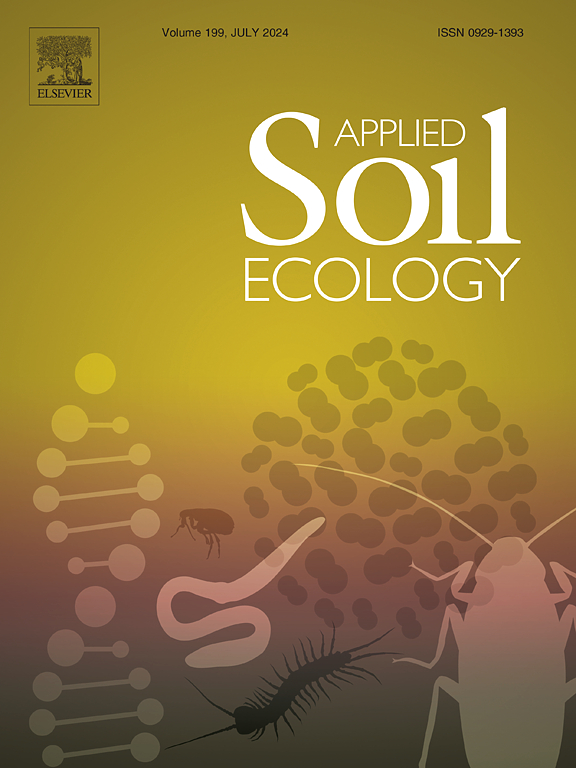Distribution of plant-parasitic nematode communities across land-use types in the North of Portugal
IF 4.8
2区 农林科学
Q1 SOIL SCIENCE
引用次数: 0
Abstract
Plant-parasitic nematodes pose a significant threat to agriculture globally, yet, while much is known about their local effects, the large-scale distribution and primary drivers are still unknown. Our objective was to investigate the influence of land-use and other environmental factors in the distribution of plant-parasitic nematodes at regional scale. A comprehensive soil sampling campaign was conducted in the North of Portugal, covering diverse land-use types, geography and climate. A total of 406 soil samples were taken from six different land-use types: annual and perennial agriculture, pastures, urban areas, and exotic and native forests. Plant-parasitic nematodes were extracted and identified to genus level through morphological characters analysis and edaphoclimatic data was obtained from our analysis and from various European datasets. Taxonomic and functional diversity indices were calculated to evaluate the impact of land-use and environmental factors on community structure. Additionally, species distribution models using ensemble of machine learning algorithms were created to predict the potential distribution of plant-parasitic nematodes. Our findings revealed that pastures had significantly more diverse plant-parasitic nematode communities, with higher alpha diversity, biomass, and herbivory footprint. Meanwhile, forests had the lowest diversity, but more heterogeneous communities within sites. The influence of environmental factors such as soil properties, land cover, and climate on the distribution of plant-parasitic nematodes could not be established. However, the potential distribution of different genera can differ according to environmental variables. Our findings provide valuable insights into the distribution patterns of plant-parasitic nematodes in northern Portugal, which can inform future land-use planning and management strategies.
求助全文
约1分钟内获得全文
求助全文
来源期刊

Applied Soil Ecology
农林科学-土壤科学
CiteScore
9.70
自引率
4.20%
发文量
363
审稿时长
5.3 months
期刊介绍:
Applied Soil Ecology addresses the role of soil organisms and their interactions in relation to: sustainability and productivity, nutrient cycling and other soil processes, the maintenance of soil functions, the impact of human activities on soil ecosystems and bio(techno)logical control of soil-inhabiting pests, diseases and weeds.
 求助内容:
求助内容: 应助结果提醒方式:
应助结果提醒方式:


